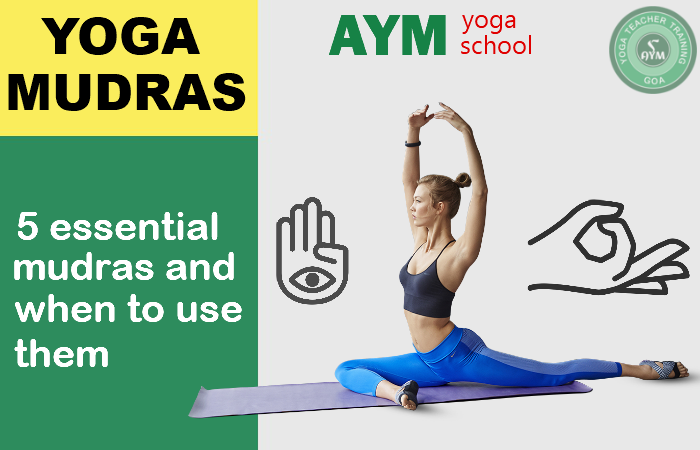
5 Essential mudras and when to use them
Yoga Mudra: The word mudra is derived from a Sanskrit word translated as a seal, finger posture, and gesture. Mudra in yoga is the most powerful tool for increasing self-care and awareness. When hand gestures are used with attention, the ability to flow the energy in the body increases. In yoga, we intend to go inward, and when yoga mudras are used during meditation, they channel your body’s energy flows. Our inner self is our actual blissful state, and yoga helps us to reach that internal state. The way we place our thumb and finger guides us where we want to direct our energy in the body.
Here are the five essential Yoga mudra and when to use them:
Applying gentle pressure to these areas of the hand with the finger activates the brain’s particular region. Our fingers represent the body’s five elements: air, water, earth, fire, and space. Balancing fundamental energies in our bodies helps in a continuous flow of power and lets us connect more with our subtle energy body, our true self. This internal energy, which is balanced, affects our sensory organs, veins, tendons, and glands. You can learn more about Yoga Mudras in our Yoga Teacher Training in Goa courses. You will learn how to practice these mudras in conjunction with your breath.
Yoga Mudras
Ideally, one should practice these yoga mudras by sitting in Sukhasana or Vajrasasna or merely sitting on a chair, keeping their back straight. Generally, ujjayi breath is used while practising yoga mudra and at least 10 to 12 deep breaths are taken in these Yoga mudras to notice the change in energies in the body.
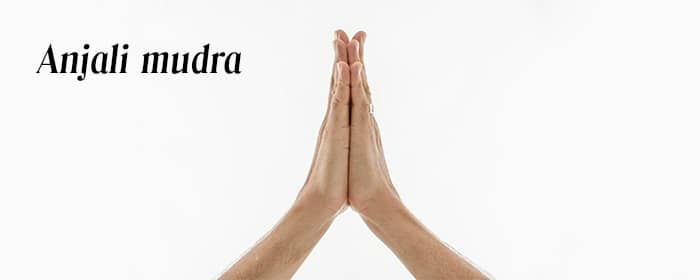
Anjali Mudra:
To perform Anjali mudra, press both palms together near your heart centre. Sometimes, the hands are placed near the third eye centre, too. This is initially a salutation that represents bowing to divinity within you from the god inside me. When used with breath, it connects the right and left hemispheres of the brain and represents our active and receptive nature.
When to use: Anjali mudra(gesture of namaste) is used at the end of every yoga class to centre oneself and bow to divinity.
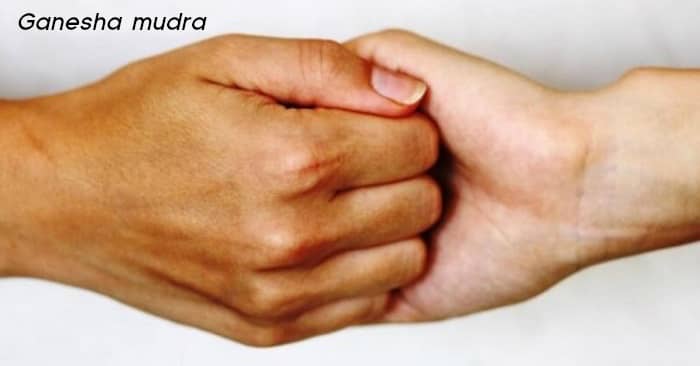
Ganesha Mudra:
To practice Ganesha mudra, bring your left hand in front of your chest with the palm facing out and grab the left finger with the right one to form a clasp or lock with the back of the right hand facing out.
Lord Ganesha is a Hindu god known as the remover of any obstacle with our strength and confidence. This yoga mudra is known to uplift your spirit and relieve your tension and stress.
When to use: Ganesh mudra is often used while practising binding yoga poses such as Marichyasana, where power and strength are needed.
Yoni Mudra:
To perform yoni mudra, press the index finger and thumb together and fold the rest of the fingers inwards, with the back of both fingers touching each other. The index finger points downward, and both the thumbs join the top to form a closed ring. The word yoni referred to the womb, and the yoni mudra represents shakti. It is believed that practising this yoga mudra helps improve fertility in women. When practised with breathing, it helps achieve the tranquillity an unborn child feels in the womb.
When to practice: Yoni mudra is performed when you practice Supta Baddha Konasana to invoke the feminine energy within you.
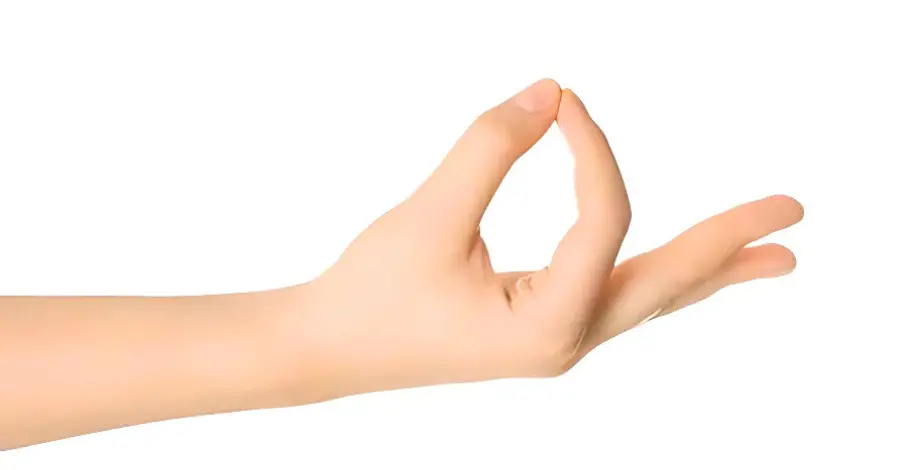
Chin Mudra:
To practice chin mudra, touch the tip of the index finger and thumb, keeping the other finger straight. Your hands should be placed on the thigh with your palm facing up. Chin mudra symbolises consciousness, increased concentration, and energy in the body. Practising chin mudra helps reduce lower back pain. The practice connects the nerve pathway and power associated with chin Bindu, which governs abdominal breathing.
When to use: Chin mudra is generally used in meditation or while practising ujjayi breath.
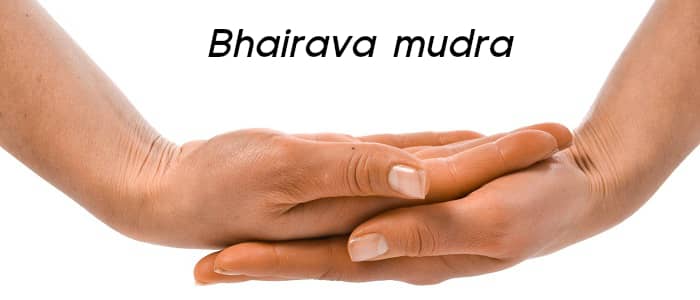
Bhairava Mudra:
Bhairava mudra is one of the easiest yoga mudras. To perform it, you must place your right hand on top of your left hand, keeping your palm facing up. Bhairava mudra is the ferocious manifestation of Lord Shiva, the destroyer. The practice of bhairava mudra represents the union of feminine and masculine energy channels (Ida and Pingala).
When to use: This yoga mudra is generally used in spiritual yoga practice.
